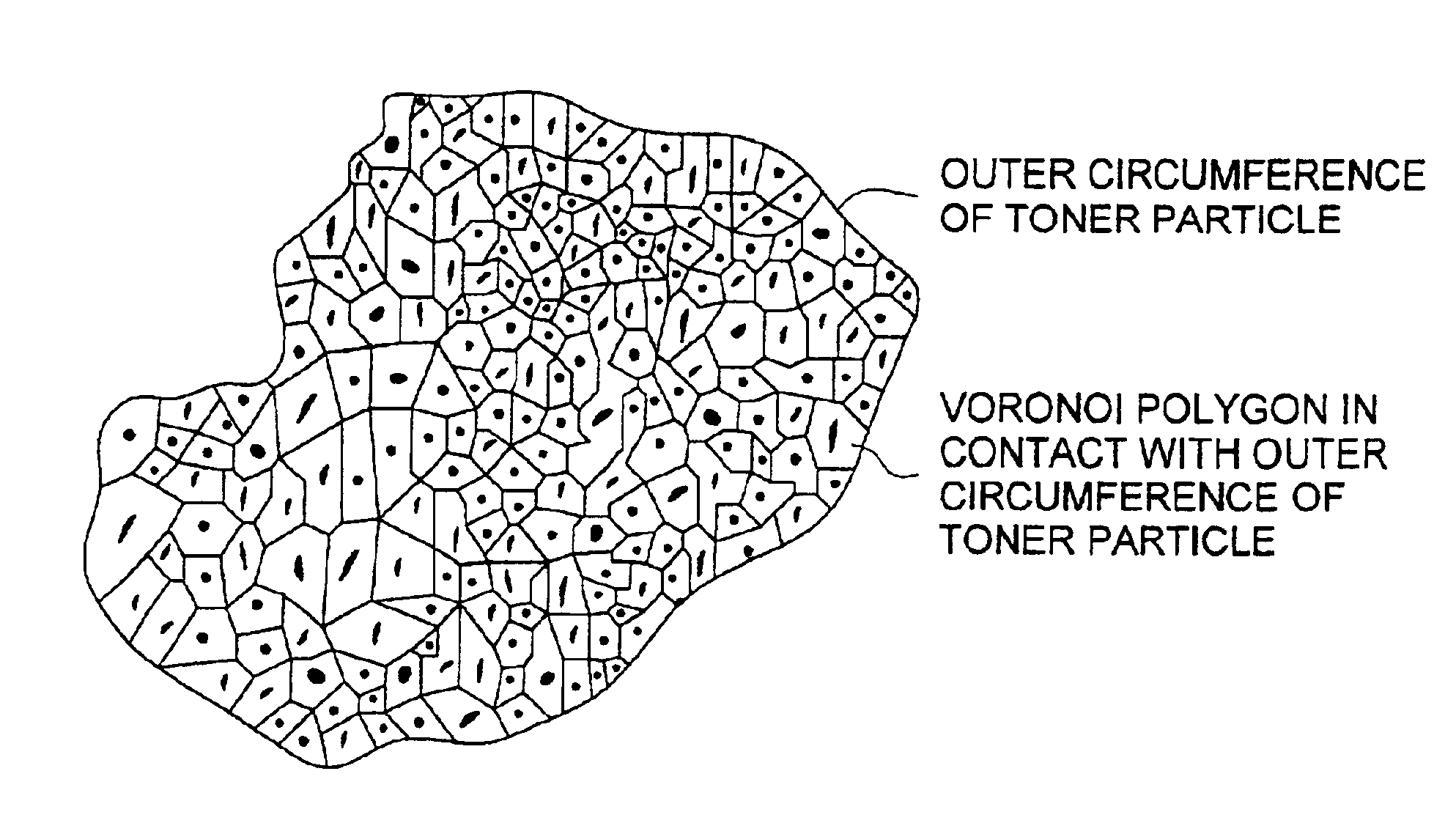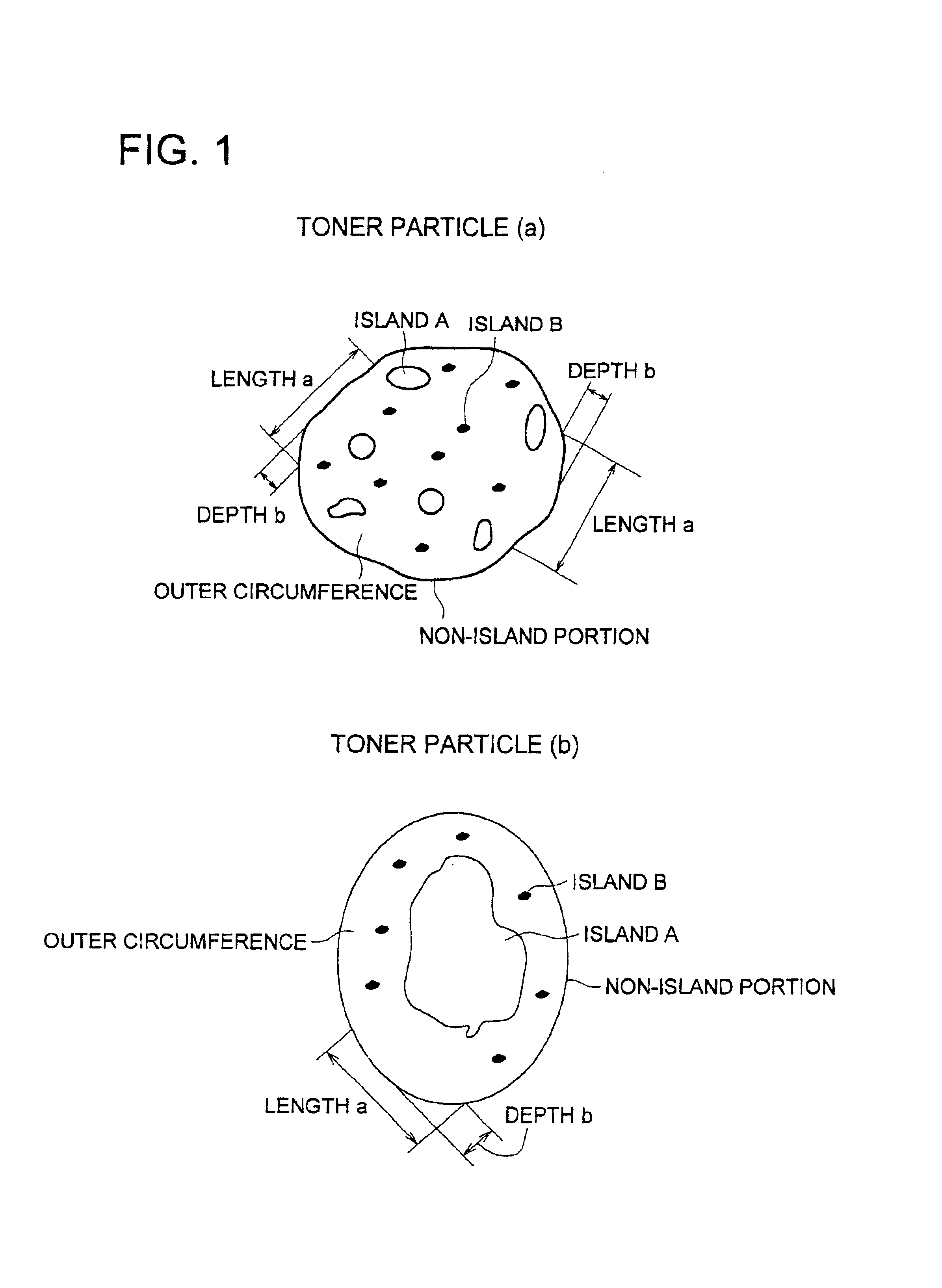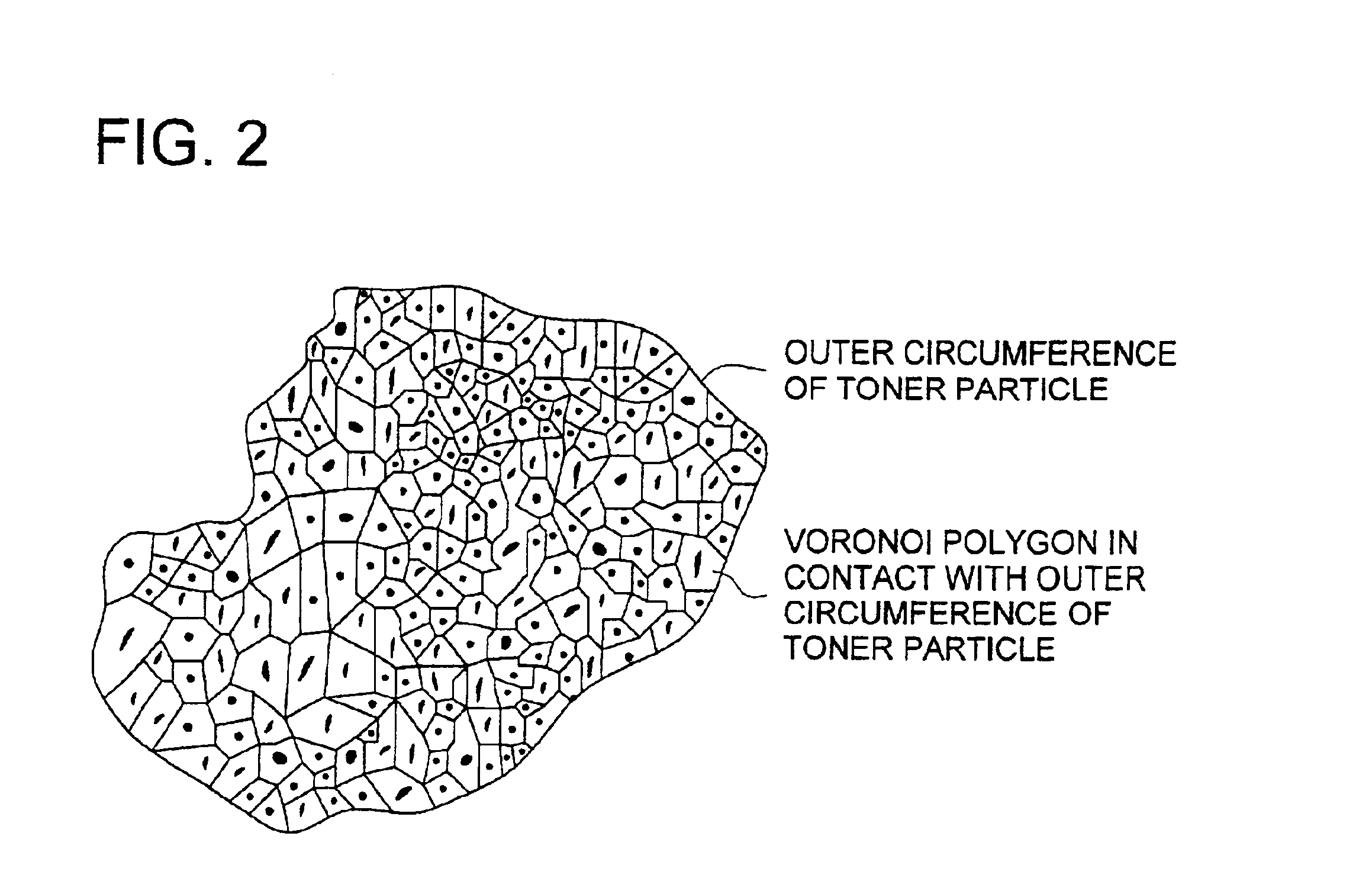Electrostatic image developing
- Summary
- Abstract
- Description
- Claims
- Application Information
AI Technical Summary
Benefits of technology
Problems solved by technology
Method used
Image
Examples
examples
[0309]The present inventing will now be detailed with reference to examples. The term “part (s)” denotes part (s) by weight.
Preparation of Latex
Latex 1HML
(1) Preparation of Core Particle (a First Stage Polymerization)
[0310]Placed into a 5,000 ml separable flask fitted with a stirring unit, a temperature sensor, a cooling pipe, and a nitrogen gas inlet was a surface active agent solution (water based medium) prepared by dissolving 7.08 g of an anionic surface active agent (101) in 3,010 g of deionized water, and the interior temperature was raised to 80° C. under a nitrogen gas flow while stirring at 230 rpm.
[0311](101) C10H21(OCH2CH2)2OS4Na
[0312]Subsequently, a solution prepared by dissolving 9.2 g of a polymerization initiator (potassium persulfate, KPS) in 200 g of deionized water was added to the surface active agent solution and it was heated at 75° C., a monomer mixture solution consisting of 70.1 g of styrene, 19.9 g of n-butyl acrylate, and 10.9 g of methacrylic acid was adde...
PUM
 Login to View More
Login to View More Abstract
Description
Claims
Application Information
 Login to View More
Login to View More - R&D
- Intellectual Property
- Life Sciences
- Materials
- Tech Scout
- Unparalleled Data Quality
- Higher Quality Content
- 60% Fewer Hallucinations
Browse by: Latest US Patents, China's latest patents, Technical Efficacy Thesaurus, Application Domain, Technology Topic, Popular Technical Reports.
© 2025 PatSnap. All rights reserved.Legal|Privacy policy|Modern Slavery Act Transparency Statement|Sitemap|About US| Contact US: help@patsnap.com



